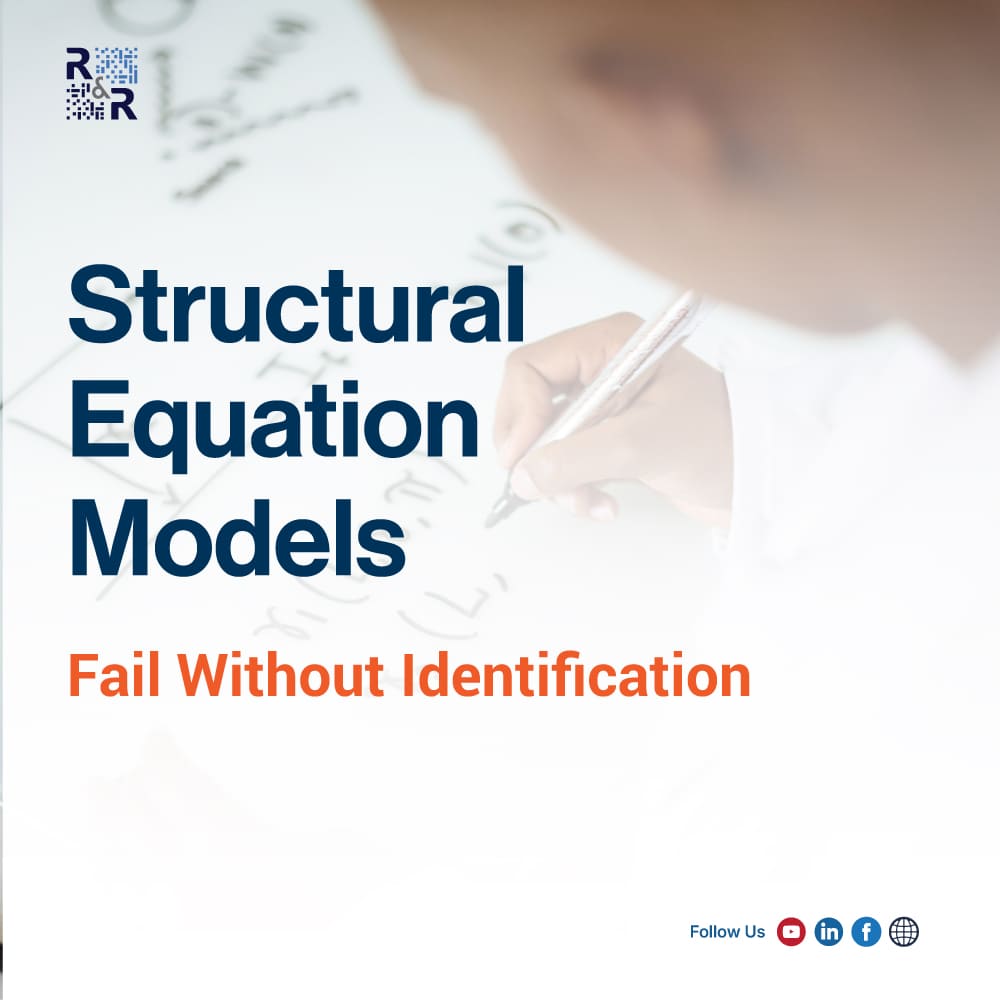Why Identification Matters in SEM
Structural Equation Modeling (SEM) is one of the most powerful tools in quantitative research. It allows scholars to test complex theories, measure latent constructs, and model mediation or moderation effects. Researchers often call SEM the “gold standard” of statistical modeling.
However, a hidden truth is often ignored: SEM collapses without proper model identification. A well-specified model can reveal deep insights, while a poorly identified one produces misleading, unsolvable, or invalid results (Kline, 2016).
Critical Identification Issues Researchers Overlook
1. Under-Identified Models
An under-identified model has more parameters to estimate than available equations. This makes it mathematically unsolvable.
- Example: A latent variable with only two indicators may fail to estimate properly.
- Best practice: Use at least three strong indicators per latent construct (Bollen, 1989).
2. Misapplied Over-Identification
Over-identified models are usually desirable because they allow testing restrictions. But when constraints lack theoretical grounding, results become misleading.
Fit indices may appear acceptable, but the assumptions underneath are invalid.
3. Weak or Single Indicators
Single-item constructs or weakly correlated measures break the rules of identification.
- Latent constructs require multiple, reliable indicators for stability.
- Confirmatory Factor Analysis (CFA) should always validate indicators before SEM estimation.
4. The Theory–Method Gap
Many researchers rush to SEM software such as AMOS, LISREL, Mplus, or SmartPLS. They apply statistical modeling without checking identification first. The result? Good-looking diagrams with no scientific meaning.
Why This Matters for Research Credibility
- Misleading Results: Poorly identified SEM produces arbitrary values.
- Rejection Risk: Journals quickly reject under-identified or poorly justified models.
- Wasted Resources: Time, data collection, and analysis collapse.
- Reputation Damage: Publishing invalid SEM erodes credibility of both scholar and institution.
Bottom line: SEM does not fail because the method is weak. It fails because researchers neglect identification logic.
Best Practices for Proper SEM Identification
At Research & Report Consulting, we guide scholars, NGOs, and institutions to strengthen SEM through robust identification strategies:
- Testing Identification: Apply order and rank conditions for solvability.
- Strengthening Indicators: Minimum three reliable indicators per latent construct.
- Balancing Theory & Data: Ensure restrictions are grounded in theory, not convenience.
- Transparent Reporting: Explain constraints and assumptions to pass peer review.
References
- Bollen, K. A. (1989). Structural Equations with Latent Variables. Wiley.
- Kline, R. B. (2016). Principles and Practice of Structural Equation Modeling. Guilford Press.
- Byrne, B. M. (2016). Structural Equation Modeling with AMOS. Routledge.
Final Thought
Structural Equation Models fail not because SEM is flawed, but because researchers neglect identification. With proper identification, SEM transforms into a powerful tool for theory-driven research.
What challenges have you faced in SEM identification? Share your experiences in the comments below.

